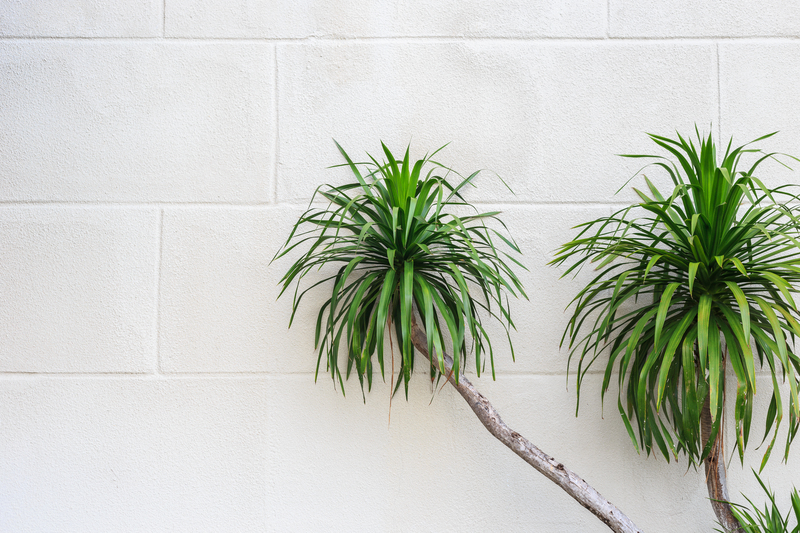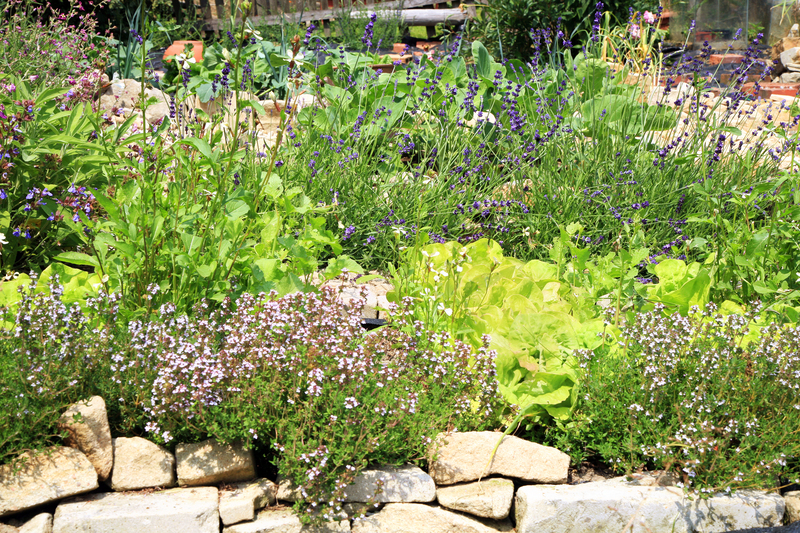Unveiling the secrets of container gardening
Posted on 12/09/2025
Unveiling the Secrets of Container Gardening
Container gardening has transformed the way we interact with plants, enabling horticultural enthusiasts and novice gardeners alike to convert even the smallest of spaces into lush, blooming paradises. As urbanization climbs and space becomes a premium commodity, interest in the art of container gardening is soaring. In this comprehensive guide, we'll unlock the secrets behind successful container gardening, anchoring tips in science and practical experience for both beginners and experts.

What is Container Gardening?
At its core, container gardening is the practice of growing plants exclusively in containers rather than planting them in the ground. This method encompasses everything from striking displays of flowering annuals on rooftops to bountiful harvests of homegrown vegetables on a sunny balcony. Its flexibility allows for creative freedom, plant diversity, and accessibility even in restricted spaces.
Benefits of Container Gardening
- Space Efficiency: Ideal for apartments, patios, and balconies
- Mobility: Easily rearrange plants for best sun exposure or style
- Soil and Pest Control: More control over soil quality and reduced risk of ground-borne pests
- Versatility: Grow ornamental flowers, fresh herbs, vegetables, and even small trees
- Accessibility: Easy for children, seniors, and individuals with limited mobility
Choosing the Right Containers for Gardening
Choosing the proper container is the foundation of successful container gardening. The size, material, and drainage properties significantly impact the health and growth of plants.
Popular Container Materials
- Terracotta: Natural, porous, classic look; great for most plants but dries quickly
- Plastic: Lightweight, affordable, retains moisture; available in many styles and colors
- Ceramic/Glazed Pots: Visually stunning, retains moisture, heavier (good for tall plants)
- Wood: Rustic charm, good insulation, may require lining to prevent rot
- Fabric Grow Bags: Promotes root aeration and prevents root circling, lightweight
When selecting a container, choose a size that allows room for growth. As a rule of thumb, larger pots retain moisture longer and provide more nutrition, while small pots dry out faster.
Drainage: Why It Matters
Proper drainage is one of the top secrets of thriving container gardens. Excess water in the root zone leads to rot and disease. Ensure containers have holes at the bottom, and elevate them slightly using pot feet or bricks to improve air circulation. Adding a layer of gravel or broken pottery at the base is not necessary and can actually hinder drainage--soil should be in direct contact with the holes.
The Best Soil Mixes for Container Gardening
The next secret to outstanding container plantings is choosing the appropriate soil. Native garden soil is dense and may harbor pests or disease--never use it in pots! Instead, opt for quality potting mixes.
Elements of an Ideal Potting Mix
- Peat Moss or Coconut Coir: Moisture retention
- Perlite or Vermiculite: Enhanced aeration and drainage
- Compost or Organic Matter: Slow-release nutrients
- Worm Castings/Biochar: Optional enhancements for added fertility
For specific plants, such as succulents or orchids, look for tailored soil blends. Remember to regularly replenish nutrients with organic or slow-release fertilizers, as container gardens exhaust soil faster than ground beds.
Lighting and Positioning Secrets
Light is a fundamental driver of plant success. One key advantage of growing plants in containers is the ability to move them easily. Here's how to master the art of light exposure:
- Full Sun Plants: Tomatoes, herbs, and many flowers need 6-8 hours of direct sunlight
- Partial Shade: Many leafy greens and ferns thrive in 4-6 hours of sunlight
- Full Shade: Select foliage plants, like hostas and certain begonias, require minimal direct sun
Observe the movement of sunlight through your chosen location and position containers accordingly. South- and west-facing sides get the most sun; north-facing spots receive the least. Rotating containers ensures even growth and helps prevent plants from leaning toward the light.
The Secret Life of Watering in Container Gardens
Watering is where many container gardeners struggle. Unlike garden beds, containers can quickly dry out. Faulty watering can lead to wilting, root rot, or stunted growth. Here are the watering secrets for container gardening:
- Check Moisture Daily: Stick your finger an inch into the soil--if dry, water
- Consistency is Crucial: Erratic watering causes stress and poor yields
- Use Mulch: A layer of bark, straw, or pebbles helps retain soil moisture
- Self-Watering Pots: These help reduce frequency and even out moisture supply
- Morning is Best: Water in the morning to reduce evaporation and disease risk
With time, you'll develop a feel for your plants' thirst. Remember, over-watering is as dangerous as under-watering!
Feeding and Fertilizing Your Container Garden
Nutrient exhaustion is a common issue in container setups because plants cannot expand their root systems to search for additional resources. Regular feeding is essential for continuous growth and abundant blooms or yield.
Types of Fertilizers
- Slow-Release Granules: Mix into soil at planting and supplement every few months
- Liquid Fertilizers: Apply during watering every 2-4 weeks
- Organic Options: Compost tea, worm castings, and seaweed extract offer gentle nutrition
Tailor your choice to the specific needs of your plants. Leafy greens and herbs appreciate nitrogen-rich formulas, while tomatoes and flowers prefer one higher in phosphorus and potassium for strong root and blossom development.
Innovative Container Gardening Techniques and Ideas
The world of container gardening is rich with creative ideas that maximize both space and impact. Here are some advanced approaches that unveil the full potential of gardening in pots:
Vertical Gardens
- Wall Planters: Hang pocket panels filled with herbs, lettuces, or succulents on fences and balconies
- Stacked Pots: Arrange multiple pots vertically around a rod or stake
- Pallet Gardens: Recycle wooden pallets for high-density, upright gardens
Companion Planting in Containers
- Tomatoes and Basil: Grow together for healthy, fragrant yields
- Marigolds and Vegetables: Marigolds deter pests from nearby crops
- Lettuce Under Taller Plants: Saves space and keeps lettuces shaded in hot weather
Theme-Based Container Gardens
- Herb Wheel: Plant a selection of culinary herbs in a divided, circular pot
- Pollinator Paradise: Mix nectar-rich flowers to attract bees and butterflies
- Miniature Edible Forest: Dwarf fruit trees underplanted with strawberries or creeping thyme
Best Plants for Container Gardening
Virtually any plant can be grown in a container with proper care, but certain species excel in pots. Here are some all-stars for every level of expertise:
Top Edible Choices
- Tomatoes: Choose compact or bush varieties for pots
- Salad Greens: Lettuces, arugula, and spinach thrive in shallow planters
- Herbs: Basil, rosemary, thyme, chives, and cilantro shine on windowsills
- Peppers: Both ornamental and culinary peppers love the warmth of containers
- Strawberries: Dangle beautifully from hanging baskets
Wonderful Ornamentals
- Petunias and Geraniums: Provide months of color
- Begonias and Impatiens: Great for shady spots
- Hostas: Offer dramatic foliage in pots
- Ornamental Grasses: Add vertical interest and motion
Common Mistakes in Container Gardening and How to Avoid Them
Unlocking the secrets of container gardening involves learning from common pitfalls:
- Overcrowding Pots: Give each plant enough space to avoid root competition and disease
- Poor Drainage: Always use containers with drainage holes
- Wrong Soil: Don't use garden soil; invest in quality potting mix
- Under or Over Watering: Monitor moisture and water consistently
- Neglecting Fertilizer: Regularly supplement nutrients
Pay attention to your plants and environment--adjust as the seasons change!
Container Gardening Across the Seasons
Seasonal shifts require adjustments in your container garden routine:
- Spring: Check for frost before planting tender annuals; refresh soil and clean containers
- Summer: Water and feed more frequently as temperatures rise
- Autumn: Transition to hardy plants, harvest edibles, and plant bulbs for spring
- Winter: Bring sensitive plants indoors or insulate pots outdoors; continue caring for evergreens
With strategic plant choices, it's possible to enjoy colorful, vibrant container gardens year-round!

Container Gardening for Beginners: Step-by-Step Guide
- Plan Your Space: Assess light, wind, and water sources; sketch a layout
- Select Containers: Choose pots for the plants you want to grow, ensuring adequate size and drainage
- Fill with Potting Mix: Use a high-quality, nutrient-rich blend suited for your chosen plants
- Plant: Arrange plants with taller varieties in the center or back, trailing around edges
- Water Thoroughly: Moisten soil deeply after planting, allowing water to run out of the drainage holes
- Feed and Mulch: Incorporate slow-release fertilizer and a top layer of mulch
- Monitor and Adjust: Watch your plants closely and move or rotate pots as needed for best growth
Conclusion: The Joy and Adventure of Container Gardening
Unveiling the secrets of container gardening empowers anyone--no matter their experience level or living situation--to cultivate beauty, sustainability, and fresh produce in their own space. Container gardening is a rewarding journey that combines creativity, practical know-how, and an adventurous spirit. With the right knowledge and a bit of experimentation, you can transform walls, windowsills, balconies, and patios into thriving green sanctuaries.
So, pull out your favorite pots, potting mix, and a handful of seeds, and let these container gardening secrets guide your next planting adventure!
Start Your Container Gardening Journey Today!
If you're inspired to join the container gardening revolution, there's never been a better time. Whether your goal is fresh homegrown food, vibrant flowers, or simply a calming green retreat, container gardening holds the key. Happy planting!

